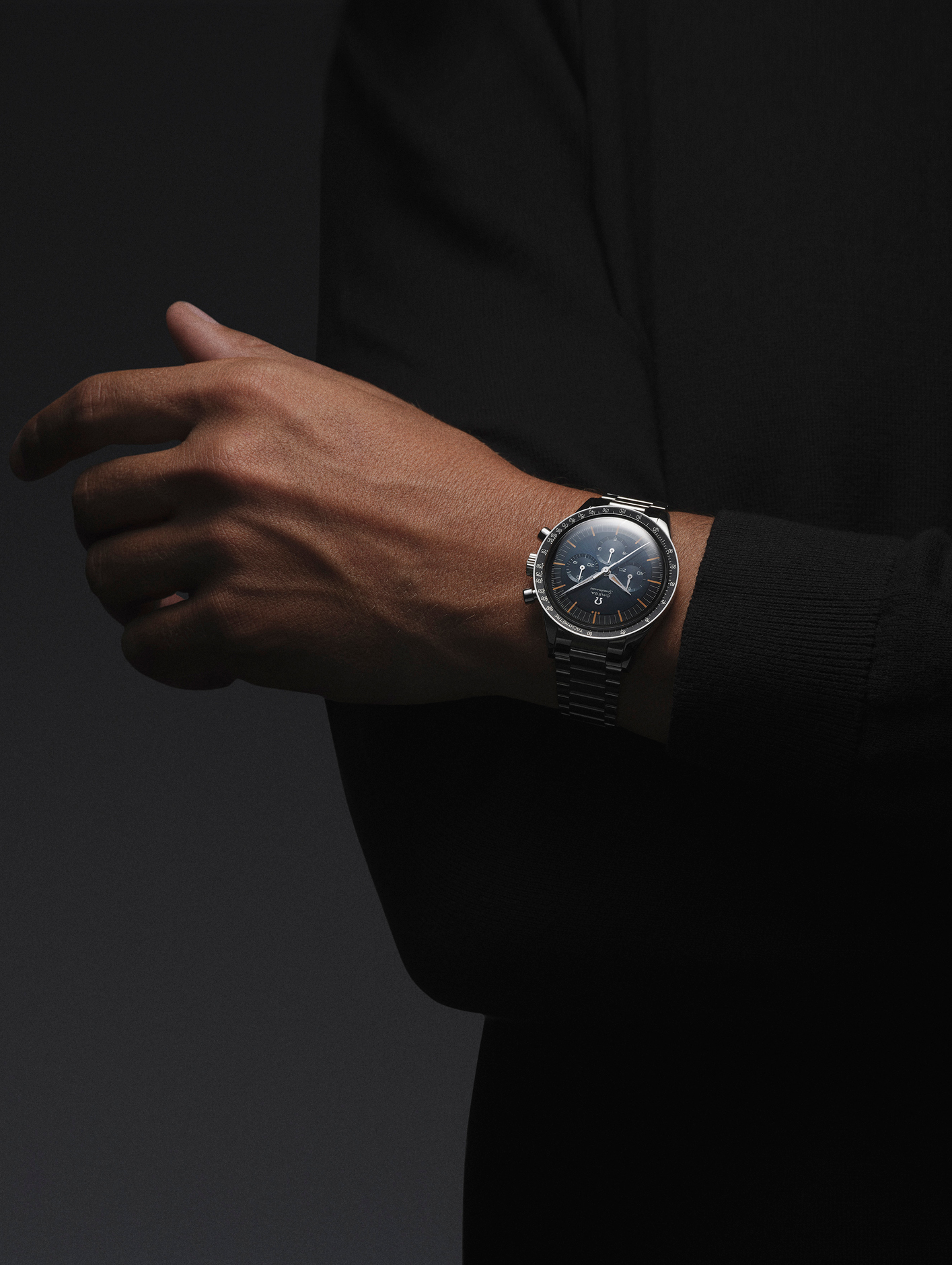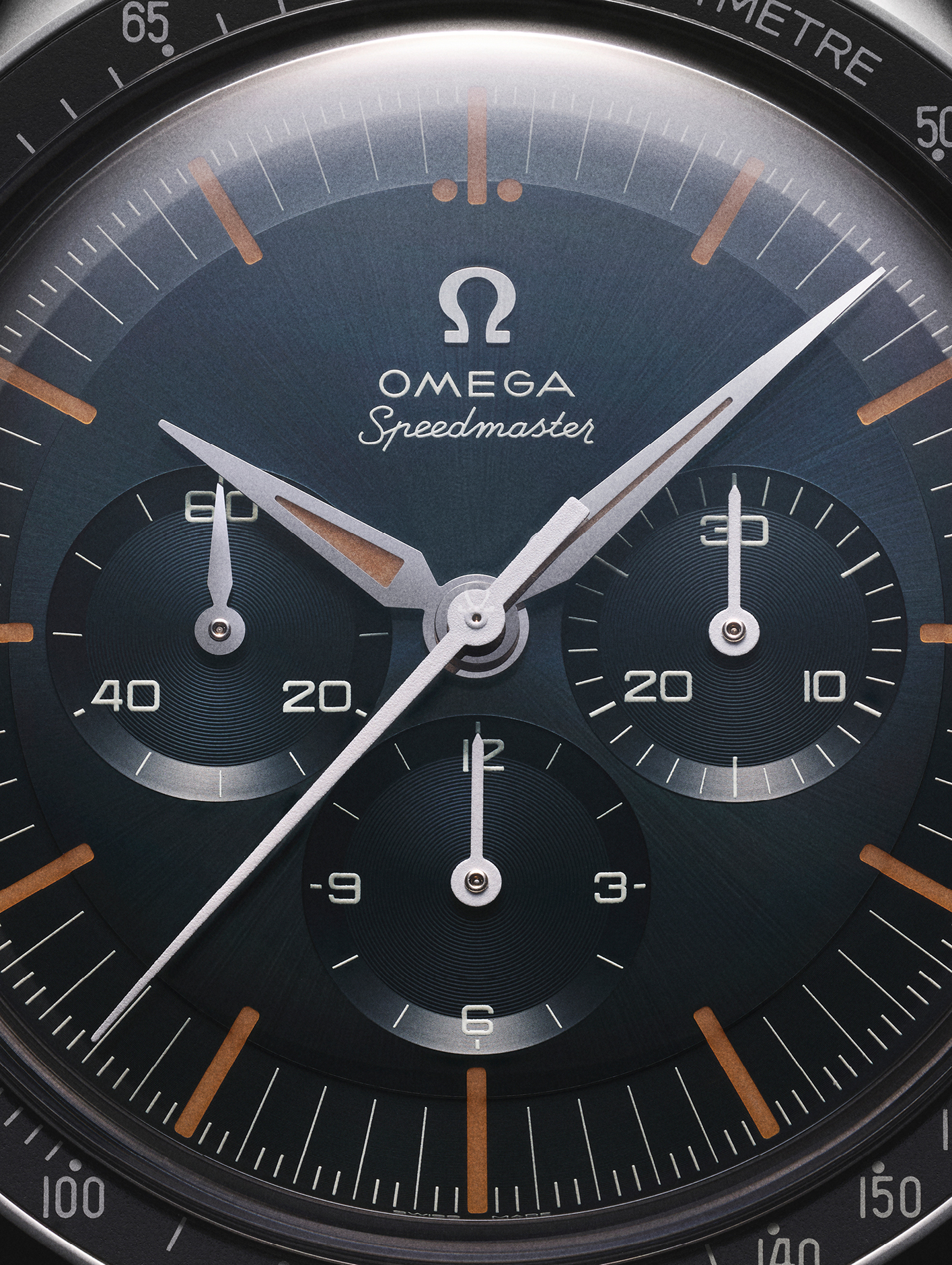WORDS
Robert Ryan
There is a pivotal scene in Philip Kaufman’s first-men-in-space movie, The Right Stuff (1983), when the Mercury Seven astronauts confront Wernher von Braun and his team of German scientists and demand the capsule they will ride into space have a window, a hatch with explosive bolts and controls so they can actually fly the machine. The scientists capitulate and the capsule is modified to the Seven’s specifications.
There was another confrontation, though, not shown in the film. Some of the Seven (who were Scott Carpenter, L Gordon Cooper, Jr, John H Glenn, Jr, Virgil I “Gus” Grissom, Walter M Schirra, Jr, Alan B Shepard, Jr, Donald K “Deke” Slayton) requested they have a watch to keep their own mission time. But the wristwatch that Nasa then offered the group had a 24-hour dial and was very confusing to read for anyone used to conventional numbering.
As Wally Schirra later recalled: ‘The seven of us unstrapped the watches and laid them on our desks. We would not wear them and that was that.’ The group decided to buy their own timepieces, with Deke Slayton and Wally Schirra opting for the aptly named Speedmaster by Omega. It is Schirra’s particular watch that the company is now celebrating with the launch of its new Speedmaster “First Omega in Space”.

The Speedmaster chronograph, with its distinctive trio of subdials for timing hours, minutes and seconds, had been launched in 1957, aimed mainly at sports professionals and fans. The two pilots, however, bought the updated model (ref CK2998) that had been released in 1959. This had a black aluminum bezel, “lollipop” seconds hand and “Alpha” hour and minute hands (as opposed to the first edition’s “Broad Arrow” styling), with a hippocampus/seahorse logo on the caseback (not always present on the earlier model) and “SPEEDMASTER” engraved in caps above it. It retained, however, the first iteration’s much respected 321 hand-wound movement.
Deke Slayton should have been the first to take the Speedmaster into space on the fourth Mercury flight, but he was diagnosed with a heart murmur and replaced by Scott Carpenter. So, Omega left Earth on the wrist of Wally Schirra, at 7:15am on October 3, 1962, when Sigma 7 (which Wally had named – Sigma being the engineering term for “in summation”, the number reflecting the group of astronauts selected for Mercury) blasted off and orbited the planet six times.
In celebration of that momentous flight, Omega has issued a commemorative First Omega in Space Speedmaster. It is full of era-appropriate touches, such as the “dot over nine” on the bezel, the sapphire crystal glass which echoes the domed shape of the Hesalite original, and Alpha hands. The size, too, at 39.7mm harks back to the early ’60s, rather than the slightly larger diameter of later “Speedies”, as does the vintage style of the writing on the dial (no “Professional” subscript either – that wasn’t introduced until 1964).

The caseback is engraved with the traditional hippocampus and the words SPEEDMASTER, FIRST OMEGA IN SPACE and OCTOBER 3, 1962. There has been a change in the manually-wound movement – to bring this Speedy into the 21st century. The handsome 2024 First Omega in Space is powered by the manual calibre 3861 Co-Axial Master Chronometer, which is approved by Metas to resist magnetic fields up to 15,000 gauss. The new watch comes with a choice of three elegant straps – brown or black leather or stainless steel bracelet. Wally Schirra, who died in 2007, would recognise it instantly as the direct descendant of the Speedmaster he took out of this world on that Mercury-Atlas flight in the autumn of 1962.
In fact, Schirra wasn’t finished with the cosmos, being the only astronaut to have flown on Mercury, Gemini (in 1965) and Apollo (1968) missions. He wore Omegas on those later flights, too, because by then, after rigorous testing of several brands, Nasa had selected the Omega Speedmaster as the only wristwatch to be “flight-qualified for manned space missions”. Omegas are still used in the agency’s space flights to this day. And, unlike Wally Schirra and Deke Slayton (who did finally make it into space in 1975), today’s astronauts don’t have to purchase their own.
£7,400; omegawatches.com




